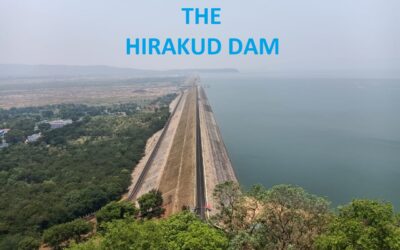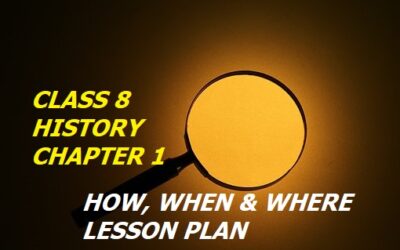Get Professional With Class VIII Social Science – Term II Lesson Plan
Class VIII Social Science – Term II Lesson Plan For The Month Of October
Topics to be covered in the month of October:
Geography:
Chapter 5. Industries
History:
Chapter 6. Colonialism and the City
Political Science:
Chapter 5 Judiciary
_____________________________________________________________________________________________________________________
Class VIII Social Science – Term II Lesson Plan For The Month Of October
Chapter 5 – Industries
Specific Objective:
Firstly, to familiarize students with the importance of manufacturing.
Secondly, to learn how primary products are processed in industries.
Thirdly, to understand how industries add value to the products.
Teaching Method
Tools/Teaching aids: Text Book, Black Board, chalk, Map of India, smart board, Images and PPT
Technique: Diagrammatic presentation.
To begin with, the teacher starts interacting with the students and asks a few questions.
Teacher: Have you brought your Social Science copy?
students response – Yes teacher.
Teacher: Do you know what this notebook was made from?
Students’ Response – Paper.
Teacher: How do we obtain this paper?
Students’ response – From trees.
Teacher: Do you directly get paper from the trees?
Students’ response – No teacher?
Teacher: Then, how is paper made from the trees?
Problematic Question: Students could not respond.
The teacher introduces the topic:
Today we will learn how industries convert pulp into paper and make it more useful to us.
Content/ Teaching Points:
- Introduction of the chapter
- Classification of Industries.
- Factors affecting the location of Industries.
- Industrial system.
- Industrial regions.
- Distribution of major industries.
- Iron and steel industry – comparison between Jamshedpur and Pittsburg.
- Cotton textile industry – comparison between Ahmedabad and Osaka.
Pedagogical Strategies:
The following Pedagogical strategies will be adopted for teaching this chapter:
Concept mapping:
Helps in learning about the types of industries.
Group discussion:
students will be divided into groups.
Each group will be allotted with different industry.
Video Presentation On Smart Board
use of different videos of Industries to create awareness among students about the three “R’s” – Reduce, Reuse, and Recycle.
Map skills:
Enable the students to understand the location of industries.
Classwork:
i) Concept Mapping:
The teacher asks the students to make a concept map to understand the location of an industry.
ii) Flow chart method:
Draw a flow chart showing the classification of industries.
iii) Class Notes:
Class notes with important questions and answers.
Homework:
Find out:
i) What will happen if the industries are located away from the raw materials?
ii) In what ways do industries create pollution? How will you control it?
iii) Where are Pittsburg, Jamshedpur, Ahmedabad, and Osaka.
Values imparted:
Firstly, Children will learn the importance of industries.
Secondly, they will be empathetic towards natural resources.
Integrated learning:
Integrating with Mathematics:
Collect the data on land, Air, Water, and Noise pollution in the past three years by the industry.
Represent the data graphically
Integrating with Hindi/English:
Write slogans to create awareness among the people about the three “R” Reduce, Reuse and Recycle.
Learning Outcome:
After reading the chapter, the students will be:
- able to classify the industries.
- explain the importance of industrial location.
- appraise the importance of manufacturing industries in their economic growth.
- will be able to explain the role of Manufacturing industries.
- Analyze the factors responsible for environmental pollution.
Remedial Measures:
Pair and share
Children sitting on the left side of the row will explain the chapter to the children sitting on their right.
- Preparing short questions for the slow learners.
- extra classes after school hours.
- Each One Teach One
_____________________________________________________________________________________________________________________________________________________
Get Professional With Class VIII Social Science – Term II Lesson Plan
Class VIII Social Science – Term II Lesson Plan For The Month Of October
Chapter 6 – Colonialism and the city
General Objective:
- To create interest in the subject.
- To know about the birth and the rebirth of a city with changing times.
Specific Objective:
After the completion of the chapter, students will be able to
Firstly, Describe the reasons for the rise of the Presidency cities during the British era and the decline of old Indian ports and trading centers.
Secondly, Describe the city of Shahjahanabad.
Thirdly, Compare the old Havelis of Shahjahanabad with the British Mansions.
Fourthly, Describe the Lahore Gate Improvement Scheme and the Delhi Improvement Trust.
Finally, Describe the impact of the Partition of India on Delhi.
Teaching Method:
Tools/Teaching aids:
Textbook, Political Map of India, Relevant Modules from the Question bank, blackboard, Chalk, and Smart board.
Technique: Interactive
To begin with, the teacher asks a few questions to the students to know about their perceptions of Delhi.
Teacher: How many of you have heard about Delhi?
Students’ response: all students raising hands.
Teacher: Delhi is the capital of which country?
Students’ response: India.
Teacher: Which historical monuments can you see in Delhi?
Students’ response: Red Fort, Parliament House, Qutub Minar, etc.
Teacher: What do you know about Delhi?
Students’ response: Delhi is an old city, New Delhi is the capital of India, the Prime Minister and other ministers live in Delhi, It has airport and is very crowded,
Teacher: Is Delhi an old city or a new city?
Students’ response: Teacher, Delhi is old but New Delhi is a new city.
Teacher, Delhi was the capital of several empires. Can you name a few?
Students’ response: silence (Problematic question.
The teacher introduces the topic, today we are going to read about the past and present history of Delhi.
Content/ Teaching Points:
- what happened to cities under colonial rule?
- How many Delhis before New Delhi?
- The making of New Delhi
i) Demolishing a past.
ii) Planning a new capital.
- Life in the time of partition.
- Inside the old city.
- The decline of Havelis
- The Municipalities begin to plan.
Activity 1:
Discuss and Debate on
i) the Importance of Drainage systems in cities.
ii) Importance of Delhi’s location for the capital.
iii) Make a list of empires that ruled over Delhi.
Activity 2:
Quiz from the chapter
The teacher divides the class into 4 groups.
One question from each group will be asked.
5 Points will be awarded for the correct answer.
If a group can not answer the question, it will be passed to another group.
2 bonus points will be awarded for the same.
Objective:
To make the topic easy and interesting.
Skills Developed:
Analyzing, Reasoning, and recalling skills.
Assessment criteria:
The activity will be assessed on the following three criteria:
i) Participation
ii) Involvement. and
iii) accuracy
Classwork:
- MCQ’s
- Short answer type questions to be discussed and done in the class.
- Class notes will be provided to the students.
Homework:
- Read and write about the life of Refugees just after independence.
- Find out the History of the town you live in. Has it changed over the last 20 years? Collect pictures and compare.
Values imparted:
Understands the importance of power and development.
Integrated learning:
Integrating with Art and Craft.
Design a planned city.
Learning Outcome:
After the completion of the chapter, children will be able to
- describe the growth and development of New Delhi as an imperial city.
- the emergence of the Presidential cities and the decline of old Indian ports and trading centers.
- tell about the old city of Shahjahanabad and its gradual decline after the revolt of 1857.
- describe the development of New Delhi as a symbol of British power.
- explain the British Municipal plans for old Delhi and the impact of the partition of India on Delhi.
Remedial Measure:
Extra time will be given to the slow learners after school hours.
You may be interested in
Class VIII Lesson Plan Of Social Science – Why Is It So Famous?
____________________________________________________________________________________________________________________________________________________
Get Professional With Class VIII Social Science – Term II Lesson Plan
Class VIII Social Science – Term II Lesson Plan For The Month Of October
Chapter 5 – Judiciary
General Objective:
Firstly, to develop an interest in the subject.
Secondly, to know about the organ of government that interprets the law.
Specific Objective:
- to develop a concern about civil and criminal cases.
- to make them aware of the powers and functions of courts.
Teaching Method:
Tools/Teaching aids:
Textbook, PPTs, Videos.
Technique: Interactive
The teacher begins the class by asking simple questions.
How do you feel when you are given out by the umpire when you know that you are not?
Have you ever faced a situation where you were not wrong but punished?
If someone steals your belongings from your bag, do you directly go to the Principal?
The answer is no.
Therefore, to maintain discipline, safety, and security, and to provide justice, Judiciary is important.
Today, in this lesson, we are going to learn about the role, functions, limitations, and power of the Judiciary.
Content/ Teaching Points:
- Introduction to the Indian judicial system.
- three-tiered structure and the differences between civil law and criminal law.
- shortcomings of the Indian judicial system.
- use of Public Interest Litigation to overcome these shortcomings.
Activity – 1: Individual activity
The teacher prepares a few topics for the students:
- Prepare a PPT on the Indian Judicial System.
- Prepare a chart to show how a case can move from a lower court to the Supreme court.
- Think of an issue on which you would like to file a PIL in the High/Supreme court.
- write about the judgment which you think was unique and out of the box.
Classwork:
- MCQ’s
- Short answer type questions to be discussed and done in the class.
- Class notes will be provided to the students.
Homework:
Find out:
- Who was the first chief justice of India?
- Who is the current chief justice of India?
Values imparted:
Respecting equality, rights, and Judgement.
Integrated learning:
Integrating with sports:
Name any three cricket umpires who are known for their free and fair judgment.
Also, Paste their photographs and mention their contribution in short.
Integrating with English:
Write an essay on ” Justice Delayed is Justice Denied”
Learning Outcome:
After studying this lesson, students will be able to
- explain the three-tiered structure of the Indian courts.
- differentiate between civil law and criminal law.
- explain the shortcomings of the Indian judicial system.
- understands the importance of Public Interest Litigation.
Remedial Measure:
Pair and Share.
Slow learners will clear their doubts from their classmates.
You may be interested in
100 Geography Questions For NTSE 2022 Which Can Create Difference – I
17 National Symbols Of India Which Every Indian Must Know
_____________________________________________________________________________________________________________________________________________________
Class VIII Social Science – Term II Lesson Plan
Conclusion:
I hope You will find class VIII Social Science – Term II Lesson Plan of great help. Here in this class VIII Social Science – Term II Lesson Plan, we have included only one chapter each from History, Political Science, and Geography. We have tried to keep our lesson plan teacher and student-friendly. I Hope, this class VIII Social Science – Term II Lesson Plan caters to the need of every child. Students will love performing these activities which will make the class lively and interesting.
As a teacher, if you have conducted any interesting classroom activity, do write to me so that I can include it in my class VIII Social Science – Term II Lesson Plan.
If any teacher wants to write a guest post can mail it to me. Your article will be published in your name with your photograph on my website.
You may like to read other popular posts:
Integrating Bihar with Tripura and Mizoram Under Ek Bharat Shreshtha Bharat and
Integrating Chhattisgarh with Gujarat – Complete Guidance





0 Comments